Largest Steel Billet Factory Q235 Q275 Q345 for Stoves Steel
- Loading Port:
- Dalian
- Payment Terms:
- TT OR LC
- Min Order Qty:
- 100 m.t.
- Supply Capability:
- 50000 m.t./month
OKorder Service Pledge
OKorder Financial Service
You Might Also Like
Largest Steel Billet Factory Q235 Q275 Q345 for Stoves Steel
Description
Reference Price:$260/ton Mn 0.3%-0.6%
Rectangular billet continuous casting billet and mainly general carbon steel, low carbon low silicon cold-rolled material, high quality carbon structural steel, high strength low alloy steel, special steel, etc.
The billet is mainly divided into two kinds from the shape:
Slab: cross section width and height of the ratio of the larger, mainly used for rolling plate.
Billet: equal cross section width and height, or a huge difference, mainly used for rolling steel, wire rod. ,
Steel billets have distinct characteristics as compared with already furnished steel bars and products. Billets have a specific grain structure, which enables the metal to be processed more intricately. Steel billets are also known for their malleability and ductility, especially when exposed to varying temperatures during shaping and molding.
Processing of Steel Billet
Steel billets are considered fresh and raw, and they must undergo a series of manufacturing processes before they can be used for various purposes. Billets are made by means of freezing molten liquid, and are later exposed to extremely low temperatures in order to allow the metal to take shape and solidify in chemical structure. The temperature manipulates the metal's physical properties, and tones its strength and durability. The subsequent processes provide the metal's curved mold design so that it can fit the allotted space provided by other machines, which complete the finishing procedures.
Images
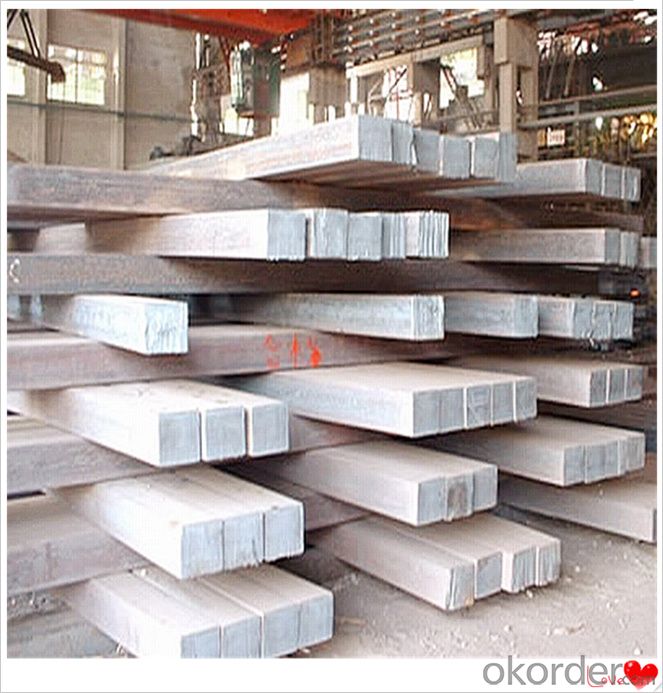
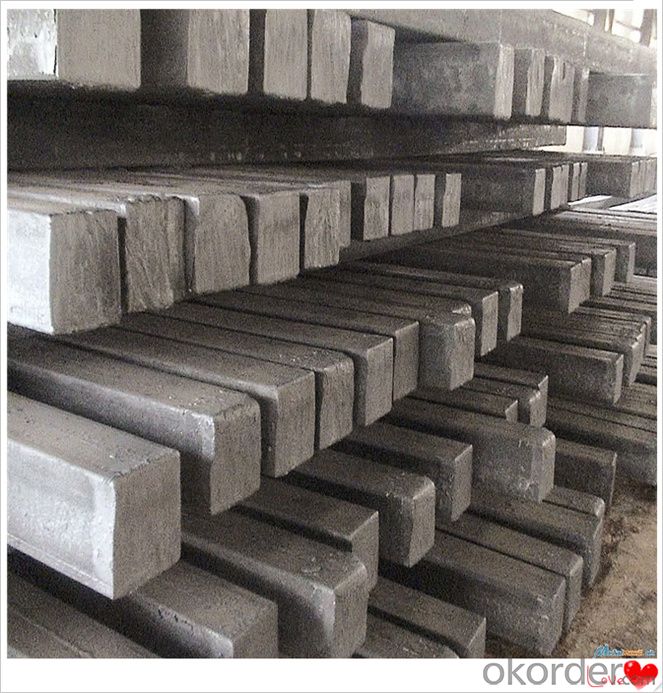
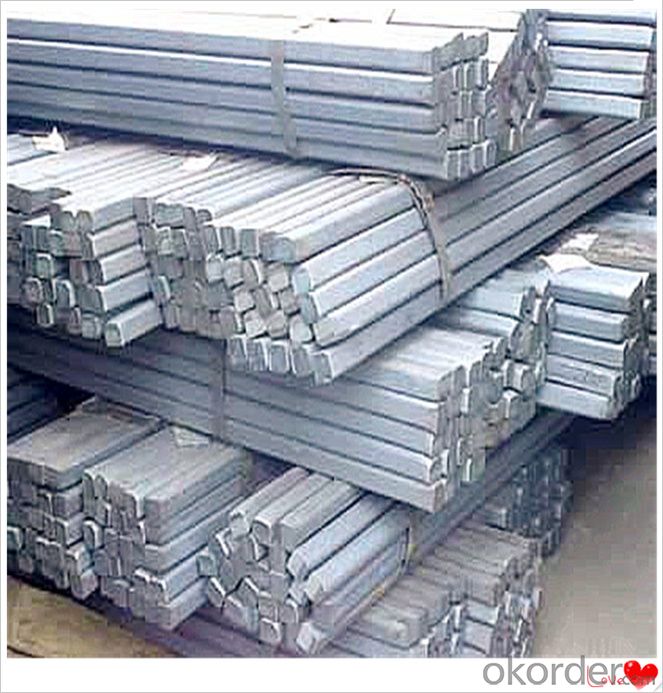
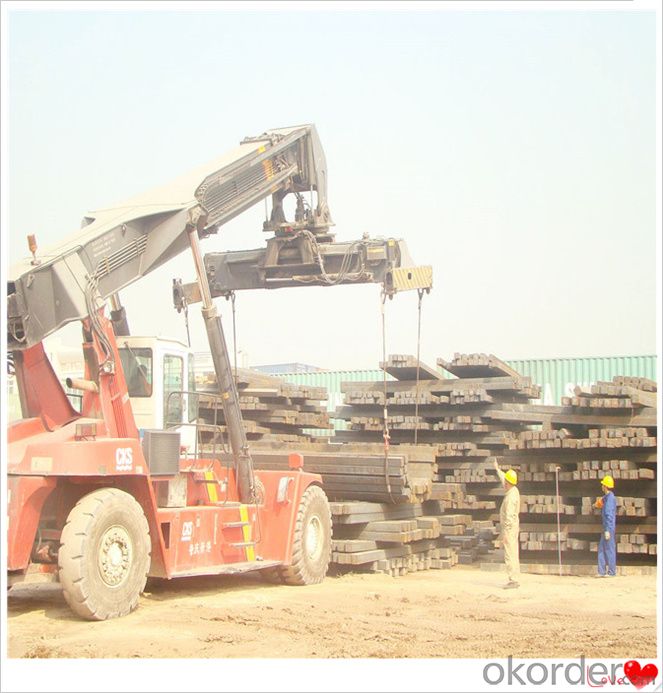
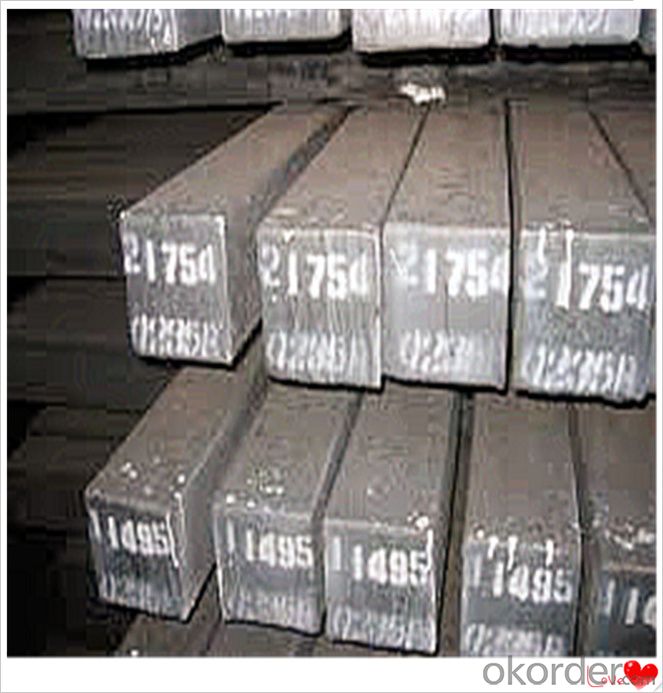
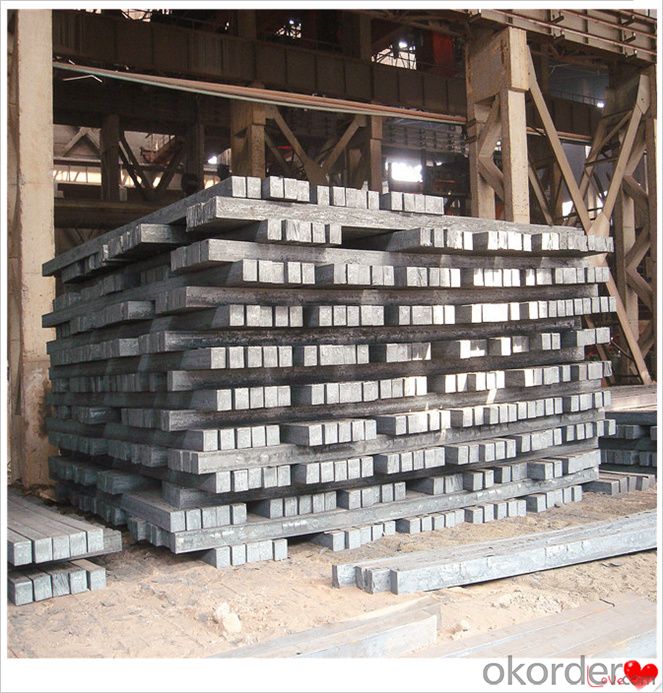
Technical Data
Size:100*100,120*120,150*150,130*130
Mn: 0.3%-0.6%
C: 1%
Cr:0.1%
Packaging
cargo ship or container
usually container price will add 15USD per ton
RFQ
We have organized several common questions for our clients,may help you sincerely:
1) How about your company?
A world class manufacturer & supplier of castings forging in carbon steel and alloy steel,is one of the large-scale professional investment casting production bases in China,consisting of both casting foundry forging and machining factory. Annually more than 8000 tons Precision casting and forging parts are exported to markets in Europe,America and Japan. OEM casting and forging service available according to customer’s requirements.
2) How to guarantee the quality of the products?
We have established the international advanced quality management system,every link from raw material to final product we have strict quality test;We resolutely put an end to unqualified products flowing into the market. At the same time, we will provide necessary follow-up service assurance.
3) How long can we receive the product after purchase?
In the purchase of product within three working days, We will arrange the factory delivery as soon as possible. The pecific time of receiving is related to the state and position of customers.Commonly 7 to 10 working days can be served.
4)Do you have your own QC department?
Yes, we have, our QC department will inspect the goods during the process of mass production and after completion of production.
hot sale!!! steel billets/ mild steel bar/ billet steel
(1): High quality steel with reasonable price.
(2): Wide excellent experiences with after-sale service.
(3): Every process will be checked by responsible QC which insures every product's quality.
(4): Professional packing teams which keep every packing safely.
(5): Trial order can be done in one week.
(6): Samples can be provided as your requirements.
If you are interested in our products, please don't hesitate to contact me.
Your any inquiry will be appreciated and we will offer you a rock-bottom price.
- Q:How are steel billets used in the manufacturing of industrial tools?
- Industrial tools rely on steel billets as a fundamental raw material. These solid steel blocks serve as the foundation for creating various types of tools used in industries like construction, automotive, and manufacturing. To begin the process of tool manufacturing, the steel billets are heated to a specific temperature. This heating process, known as forging, makes the steel more malleable and easier to work with. Once heated, specialized machinery like power hammers and presses shape and form the billets into the desired tool design. During the shaping process, intense pressure is applied to the heated billet, transforming it into the desired tool shape, such as a chisel, wrench, or hammer head. The precise shaping ensures that the tool possesses the necessary strength, durability, and functionality for its intended use. Following the initial shaping, the tool undergoes further refinement and finishing through processes like machining, grinding, and heat treatment. Machining removes excess material and creates needed holes, threads, or features for functionality. Grinding provides a smooth surface finish and precise dimensions. Heat treatment is a critical process that involves subjecting the tool to controlled heating and cooling cycles. This treatment alters the steel's molecular structure, enhancing hardness, strength, and toughness. Different heat treatment techniques, like quenching and tempering, are employed based on specific tool requirements. Once the tool has been shaped, machined, ground, and heat-treated, it undergoes a series of quality checks and inspections to ensure it meets necessary specifications and standards. These checks include dimensional measurements, visual inspections, and functional tests to guarantee the tool is suitable for its intended purpose. In conclusion, steel billets play an integral role in manufacturing durable and high-performing industrial tools. Through shaping, machining, heat treatment, and refinement, these billets are transformed into tools that contribute to efficiency, productivity, and success across various industries. The versatility and strength of steel make it an ideal choice for producing a wide range of tools, further enhancing their performance and longevity.
- Q:What are the properties and characteristics of steel billets?
- Steel billets are semi-finished metal products that are typically used in the production of various steel products. They possess several properties and characteristics that make them suitable for such applications. Firstly, steel billets have a high strength-to-weight ratio, which makes them incredibly strong and able to withstand heavy loads. This strength is derived from the carbon content in the steel, which enhances its structural integrity. Secondly, steel billets have excellent heat conductivity, allowing for efficient heat transfer during various manufacturing processes. This property makes them ideal for applications that involve high-temperature operations, such as forging and rolling. Moreover, steel billets possess good machinability, meaning they can be easily shaped and formed into desired products. This property is essential in the manufacturing industry, as it allows for the production of complex and customized steel components. Steel billets also exhibit excellent ductility, which enables them to be stretched and molded without breaking. This characteristic is crucial in applications where the steel needs to be bent or formed into various shapes. Additionally, steel billets have a high resistance to corrosion, making them suitable for use in outdoor or corrosive environments. This property ensures the longevity and durability of steel products made from billets. Furthermore, steel billets can be easily welded, allowing for the fabrication of large and complex structures. Their weldability makes them versatile and adaptable to different construction and manufacturing needs. Lastly, steel billets have a consistent and uniform composition, ensuring high-quality and reliable steel products. This consistency is achieved through precise manufacturing processes and strict quality control measures. In conclusion, steel billets possess several properties and characteristics that make them highly desirable in the production of steel products. Their high strength, heat conductivity, machinability, ductility, corrosion resistance, weldability, and consistent composition make them essential in various industries, including construction, automotive, and manufacturing.
- Q:How are steel billets used in the manufacturing of railway equipment?
- Steel billets are an essential component in the manufacturing of railway equipment. These billets, which are semi-finished steel products, are typically used as raw material for various railway components such as rails, wheels, axles, and other structural parts. To begin the manufacturing process, the steel billets are subjected to heating within a furnace to reach the desired temperature for hot rolling. This heating process helps to improve the malleability and ductility of the steel, making it easier to shape and form into the desired railway equipment components. Once the steel billets have reached the appropriate temperature, they are then passed through a series of rolling mills. During this stage, the billets are subjected to intense pressure, causing them to elongate and change their shape. This process is known as hot rolling and is crucial for transforming the steel billets into long, slender sections such as rails or axles. After hot rolling, the railway components are further processed to achieve the desired shape and specifications. For example, rails may undergo a process called head hardening to enhance their wear resistance and strength. Similarly, wheels and axles may undergo additional heat treatment processes to improve their mechanical properties and durability. It is important to note that the quality of the steel billets used in the manufacturing process plays a significant role in the overall quality of the railway equipment. The steel used should have specific characteristics such as high strength, toughness, and resistance to wear and fatigue, to ensure the safety and reliability of the final products. In summary, steel billets are an integral part of the manufacturing process for railway equipment. Through hot rolling and subsequent processing, these billets are transformed into various components that form the backbone of rail systems. The quality of the steel billets directly impacts the performance and longevity of the final railway equipment, making them a critical element in the industry.
- Q:How are steel billets used in the production of hydraulic components?
- Steel billets are an essential raw material used in the production of hydraulic components. These billets, which are semi-finished forms of steel, serve as the starting point for manufacturing various hydraulic parts. To begin with, steel billets are heated to high temperatures to make them malleable. This process is known as hot rolling, and it allows the billets to be easily shaped and formed into the desired hydraulic component. The hot billets are then passed through a series of rollers to achieve the desired size and shape, such as bars, rods, or tubes. Once the steel billets have been shaped, they undergo further machining processes to create specific hydraulic components. For example, they may be cut, drilled, or threaded to form pistons, cylinders, valve bodies, or other essential parts used in hydraulic systems. The use of steel billets in hydraulic component production offers several advantages. Firstly, steel is known for its high strength and durability, making it an ideal material for hydraulic applications where components are subjected to high pressure and heavy loads. Additionally, steel's excellent corrosion resistance ensures the longevity of hydraulic components, even in harsh operating conditions. Furthermore, steel billets allow for precise dimensional control during the manufacturing process. This ensures that the hydraulic components meet the required specifications and can seamlessly integrate into hydraulic systems without any compromise in performance. In conclusion, steel billets play a crucial role in the production of hydraulic components. By starting with these semi-finished forms of steel, manufacturers can create high-quality, durable, and precisely engineered parts that are vital for the efficient operation of hydraulic systems.
- Q:How are steel billets used in the manufacturing of pressure vessel components?
- Steel billets are a crucial raw material in the manufacturing process of pressure vessel components. Pressure vessels are containers designed to hold gases or liquids at a significantly higher or lower pressure than the surrounding environment. These components are widely used in various industries such as oil and gas, chemical, and power generation. Steel billets, which are semi-finished products with a square or round cross-section, serve as the starting point for the production of pressure vessel components. They are typically made from carbon or alloy steel and undergo several manufacturing processes to transform them into the final product. The first step in the manufacturing process involves heating the steel billets to a specific temperature to make them more malleable. This process is known as hot working or forging. The heated billets are then subjected to pressure, either through hammering or rolling, to shape them into the desired form. This process helps to refine the structure of the steel and improve its mechanical properties. After the initial shaping process, the billets are further processed through a series of machining operations. This includes cutting, drilling, and milling to create the necessary features and dimensions required for pressure vessel components such as shells, heads, nozzles, and flanges. These machining operations ensure that the components meet the precise specifications and tolerances required for safe and efficient operation. Additionally, the steel billets may undergo heat treatment processes such as annealing, quenching, and tempering to further enhance their mechanical properties. Heat treatment helps to improve the strength, hardness, and durability of the steel, making it suitable for withstanding high pressures and corrosive environments. Once the pressure vessel components are machined and heat-treated, they undergo rigorous quality control inspections to ensure they meet the required standards and specifications. This includes non-destructive testing methods such as ultrasonic testing, radiographic testing, and liquid penetrant testing to detect any potential defects or flaws. In summary, steel billets play a crucial role in the manufacturing of pressure vessel components. They are transformed through hot working, machining, and heat treatment processes to create the final products. By using high-quality steel billets and employing stringent quality control measures, manufacturers can produce pressure vessel components that are safe, reliable, and capable of withstanding the demanding conditions they are designed for.
- Q:How do steel billets contribute to the overall thermal insulation of a structure?
- The overall thermal insulation of a structure is not directly influenced by steel billets. Instead, materials with low thermal conductivity, such as insulation boards or panels made from materials like fiberglass, foam, or mineral wool, are primarily used to achieve thermal insulation. On the other hand, steel billets are commonly utilized as a raw material in the construction industry for various purposes in the production of steel beams, columns, and other structural components. These components indirectly contribute to the thermal insulation of a structure when integrated correctly. For example, steel beams and columns play a crucial role in supporting and distributing the load of insulation materials, ensuring their effective performance. Moreover, steel components can be designed in a way that minimizes thermal bridging, which occurs when heat is transferred between materials with different thermal conductivities. By minimizing thermal bridging, steel components help maintain a consistent temperature throughout the structure and prevent heat loss or gain at these junctions. However, it is important to recognize that the primary function of steel billets in a structure is not thermal insulation. Instead, they provide structural stability, durability, and strength to the building. To achieve optimal thermal insulation, additional materials and construction techniques specifically designed for insulation purposes should be used alongside steel components.
- Q:What are the different methods of steel billet surface honing?
- There are several different methods of steel billet surface honing, each serving a specific purpose and achieving different results. Some of the common methods include: 1. Manual Honing: This traditional method involves using hand-held honing tools, such as stones or abrasive pads, to manually remove any imperfections or rough surfaces from the steel billet. Skilled operators carefully rub the honing tool along the surface of the billet until the desired smoothness is achieved. 2. Mechanical Honing: In this method, mechanical honing machines are used to automate the honing process. These machines are equipped with rotating abrasive stones or pads that move along the surface of the billet, removing any irregularities. Mechanical honing allows for a more consistent and precise honing process, with the ability to control factors such as pressure, speed, and contact area. 3. Diamond Honing: Diamond honing is a specialized method that utilizes diamond-coated tools to achieve a high level of precision and smoothness. The diamond particles on the honing tool provide superior cutting capabilities, allowing for the removal of even the smallest imperfections. This method is often used for honing high-quality steel billets that require a flawless surface finish. 4. Hydrohoning: Hydrohoning, also known as abrasive flow machining, involves using a viscous abrasive medium that is forced through the billet's internal passages to remove any surface irregularities. This method is especially effective for honing complex shapes or internal surfaces that are difficult to reach through other methods. The abrasive medium can be adjusted to achieve different levels of surface finish. 5. Electrochemical Honing: Electrochemical honing is a technique that combines the principles of electrochemical machining and honing. It involves using a special electrolyte solution and a honing tool with an electrode to remove material from the billet's surface. This method is effective for honing hard materials and achieving a smooth, mirror-like finish. These are just some of the different methods of steel billet surface honing. The choice of method depends on factors such as the desired surface finish, the complexity of the billet's shape, the material being honed, and the level of precision required.
- Q:What are the major steel billet producing countries?
- The major steel billet producing countries include China, India, Russia, Japan, and the United States.
- Q:Can steel billets be used in the production of energy-efficient appliances?
- Yes, steel billets can be used in the production of energy-efficient appliances. Steel is a versatile and durable material that can be formed into various components of appliances, such as shells, frames, and internal structures. When properly designed and manufactured, steel components can contribute to the overall energy efficiency of appliances by ensuring better insulation, heat distribution, and overall performance.
- Q:What is the role of steel billets in the manufacturing of construction excavators?
- The significance of steel billets in the production of construction excavators cannot be overstated. These semi-finished steel products, shaped like rectangular solids, are vital for creating various components of excavators. An essential characteristic of steel billets is their exceptional strength and durability. The construction industry requires materials that can endure heavy loads, intense pressure, and harsh working conditions. Steel billets possess these qualities, making them perfect for fabricating excavators that can withstand the demanding nature of construction sites. Throughout the manufacturing process, steel billets are heated and formed into different parts of the excavator, such as the mainframe, booms, arms, and buckets. These components necessitate high-strength materials to guarantee structural integrity and longevity. Moreover, steel billets offer the advantage of precise customization and fabrication. Manufacturers can mold and shape the billets into specific sizes and dimensions, tailored to the requirements of different excavator parts. This flexibility ensures a seamless fit of the components, enhancing the overall performance and functionality of the machine. Furthermore, steel billets exhibit excellent weldability. Given the constant stress and movement excavators undergo, welding is a critical process for joining the various components. Steel billets facilitate strong and dependable welds, ensuring the structural soundness of the excavator and its ability to handle heavy-duty tasks. In conclusion, the role of steel billets in the manufacturing of construction excavators is indispensable. Their strength, durability, customizability, and weldability make them the ideal raw material for constructing robust and reliable machines, indispensable for the demanding nature of the construction industry.
1. Manufacturer Overview |
|
|---|---|
| Location | |
| Year Established | |
| Annual Output Value | |
| Main Markets | |
| Company Certifications | |
2. Manufacturer Certificates |
|
|---|---|
| a) Certification Name | |
| Range | |
| Reference | |
| Validity Period | |
3. Manufacturer Capability |
|
|---|---|
| a)Trade Capacity | |
| Nearest Port | |
| Export Percentage | |
| No.of Employees in Trade Department | |
| Language Spoken: | |
| b)Factory Information | |
| Factory Size: | |
| No. of Production Lines | |
| Contract Manufacturing | |
| Product Price Range | |
Send your message to us
Largest Steel Billet Factory Q235 Q275 Q345 for Stoves Steel
- Loading Port:
- Dalian
- Payment Terms:
- TT OR LC
- Min Order Qty:
- 100 m.t.
- Supply Capability:
- 50000 m.t./month
OKorder Service Pledge
OKorder Financial Service
Similar products
New products
Hot products
Hot Searches
Related keywords


































